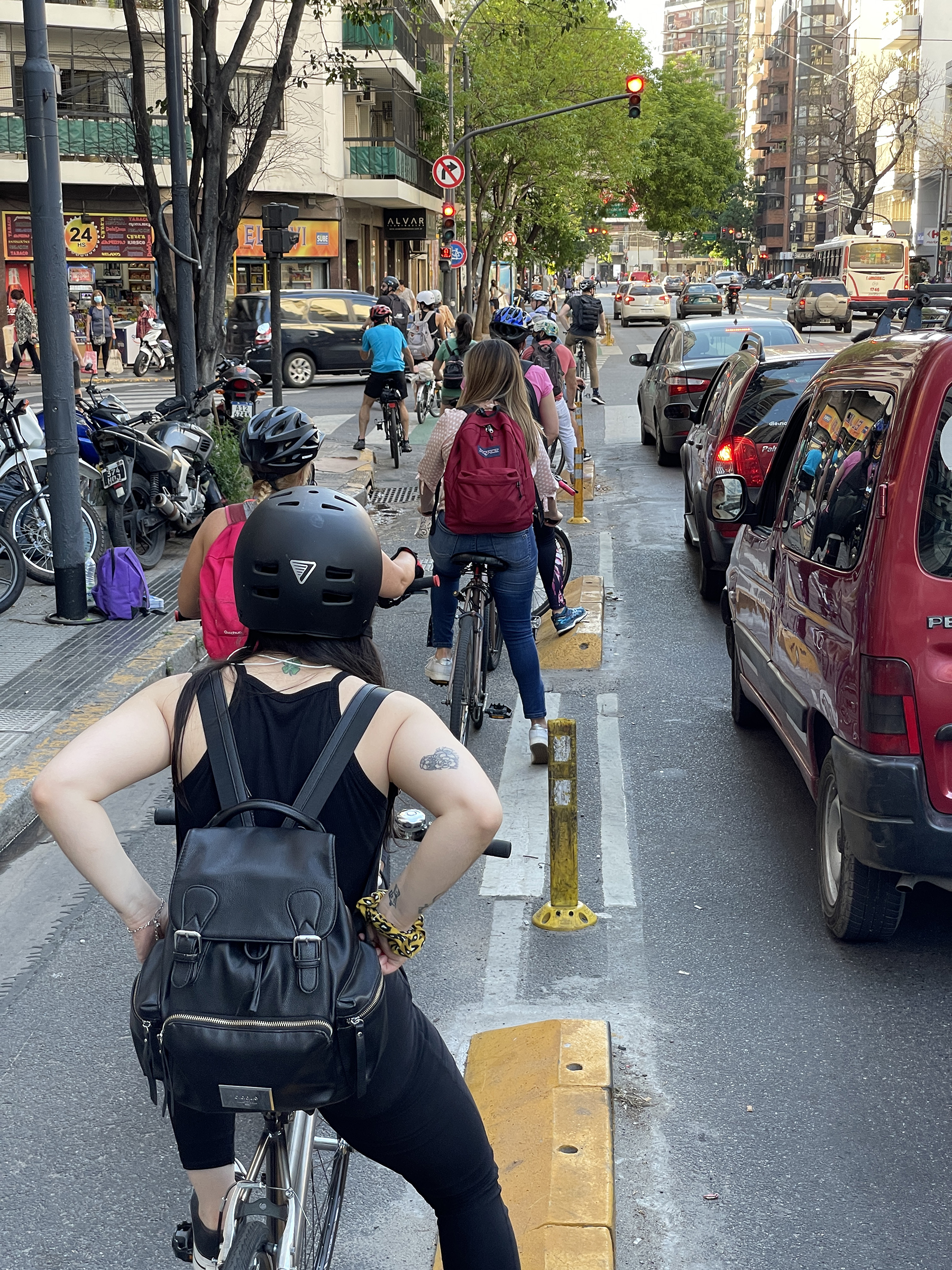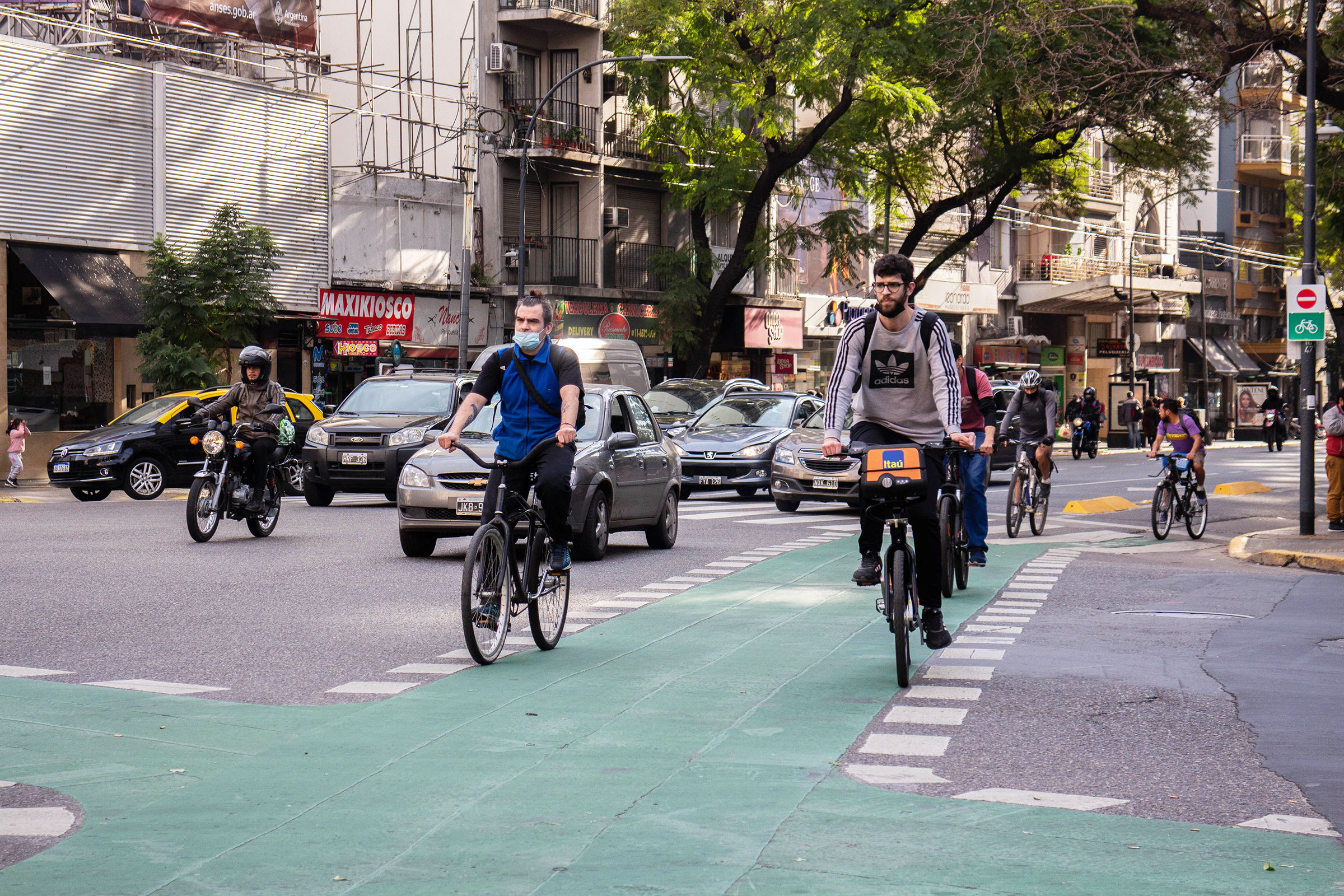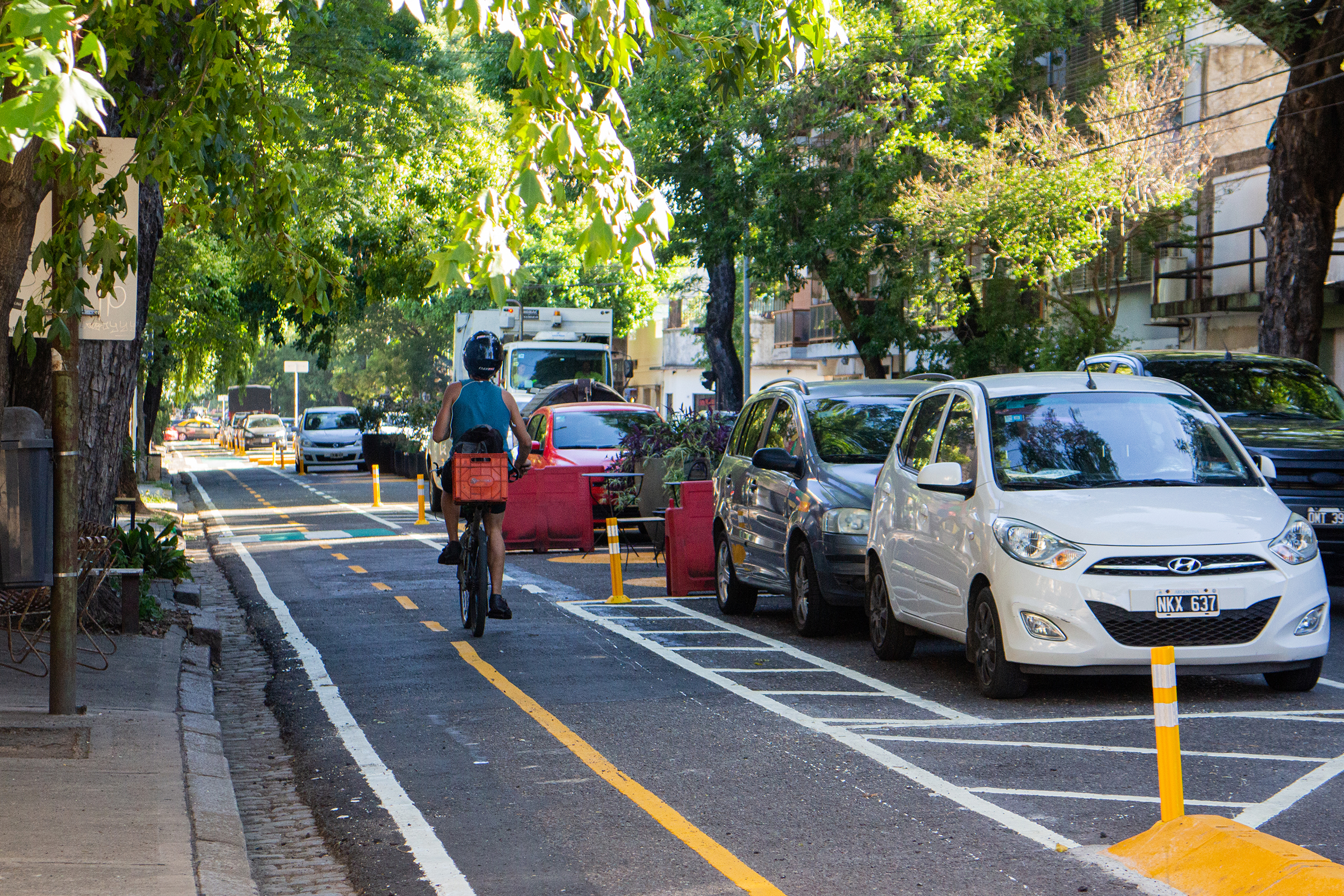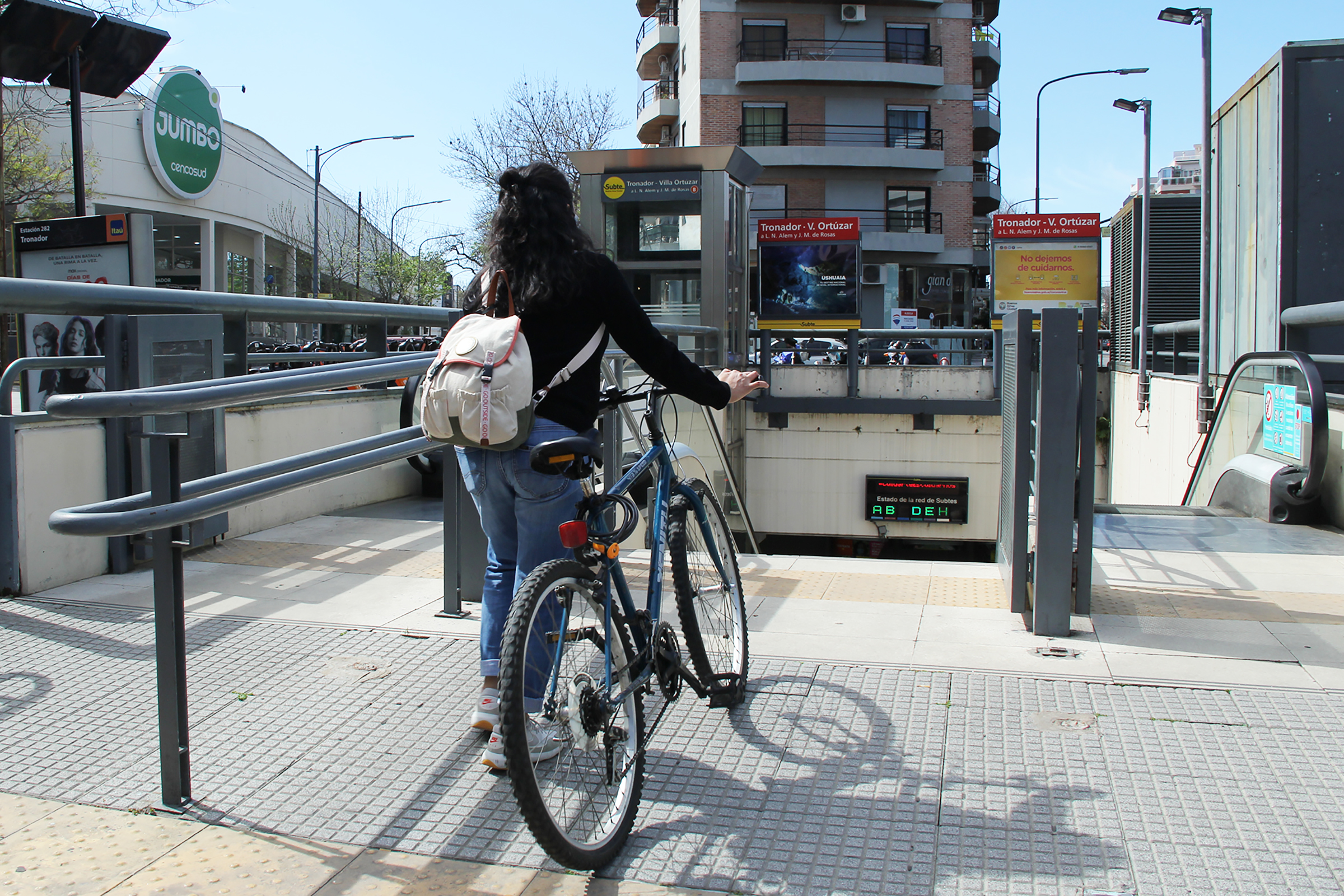- - © City of Buenos Aires
 - © City of Buenos Aires
- © City of Buenos Aires - © City of Buenos Aires
- © City of Buenos Aires - © City of Buenos Aires
- © City of Buenos Aires
City
Buenos Aires
Main actors
Local Government
Project area
Inner City
Duration
Ongoing since 2020
The Covid-19 pandemic highlights the need for bike-friendly cities.
The COVID-19 pandemic has provided an opportunity for the City of Buenos Aires to re-examine existing transport models in relation to resilience and sustainability. Increased access to safe public transit and the deployment of new technologies to combat traffic congestion, road traffic incidents and air pollution will ensure the transport system is more inclusive, affordable, integrated and responsive to emergency situations.
This case study was contributed from the UCLG Learning team. Peer-Learning Note #29 on Sustainable Urban Mobility & COVID-19
Background:
Mobility is a fundamental function of all urban areas. In the decade leading up to the COVID-19 pandemic, many regions saw increased investment in walking and cycling infrastructure, traffic calming measures, and public realm improvements as cities focused on developing mixed-mode public transportation systems that would be less reliant on carbon-intensive modes of transport, such as private cars.
The City of Buenos Aires has long been committed to making the bicycle a real, safe, ecological, economic and pleasurable means of transportation. With a well-structured and mature transportation network, composed of urban and metropolitan bus systems, BRT, subway, train, highways, intermodal stations and a centre for management and monitoring of urban mobility, the City has been investing in the development of a protected bikeway network. This network has seen a ten-fold increase in the modal split for bicycles since 2009, reaching 4% by 2019.
Objectives:
The City has a goal of reaching 350km of protected bikeways by 2023, connecting the city’s main points of interest, key avenues, and the bus, train, and metro stations, creating a cohesive and comprehensive transportation system.
The City is now looking at how to avoid a massive return to the private car and sees cycling as key to guaranteeing balanced, healthy, inclusive, and sustainable mobility.
The City of Buenos Aires is investing in quality infrastructure to support an increase in the number of bike lanes and the development of a new economy associated with the buying and selling of bicycles. The goal is to redefine the urban landscape and use the bicycle as a fundamental axis of a new social and environmental contract.
In addition to increasing the number of bike lanes, the City is also providing parking solutions for roads, parks and metro stations. To encourage more people to cycle, the City is expanding the children’s cycling learning program and introducing one for adults in 2022. The City is also working with businesses, NGOs and citizens to engage in collaborative work to support these changes.
Previously, the City of Buenos Aires focussed on building cycling infrastructure on secondary and residential streets. However, with the arrival of the COVID-19 pandemic that focus changed and it became necessary to accelerate many of the mobility projects that were planned or in development to accommodate the record number of bicycle trips registered on city streets.
In September 2020, 17 km of inexpensive and quick-to-implement bike lanes were designed and executed with the goal of rapidly guaranteeing road space for bicycles, with the understanding that the project could be improved over time.
The results were extremely positive: after one month of operation of these pop-up bike lanes, the numbers of bicycle trips on Cordoba Avenue rose 186% and on Corrientes Avenue 113 %. Additionally, the number of women’s bike trips tripled on these new corridors during the same period.
Since then, Buenos Aires’ pop-up bike lanes have been consolidated and improved, thus becoming a permanent part of the city’s structured network of protected bike lanes.
The approved budget for the development of the city's cycling infrastructure for the period 2021-2023 is 15 million USD. This will be used mostly for the construction of 11km bicycle lanes on each side of Libertador Avenue (22 km in total).
Bicycle use in Buenos Aires has increased during the pandemic, with daily trips rising by 27 %. Additionally, there has been a 50 % increase in parcel deliveries by bicycle and a 131 % increase in bicycle sales.
The experience and expertise gained in the last 2 years has allowed the City to develop a more creative and innovative visions, based on data-drive decision making. Hypotheses have been tested and error have corrected as can be seen in the continuous improvement of infrastructure.
The many benefits of bike-riding have been widely documented and include increased freedom of movement, sustainability, improved health and increased quality of life. In addition, bike infrastructure is relatively affordable to implement and maintain, and can have a significant impact on reducing green gas emissions and noise pollution.
Some of the specific benefits of bike infrastructure have been estimated in a 2021 study by Steer for the World Bank (not yet published). The study found that the benefits of bike lanes in the cities of Córdoba and Corrientes more than quadrupled the costs of investment in infrastructure. Benefits were estimated in terms of health, time savings, road safety and GHG reduction. This infrastructure also had a direct impact on equity, as the number of female cyclists on the intervened avenues tripled during the quarantine period imposed for COVID-19.
The current economic situation and lack of funding pose unprecedented challenges that require short-term planning and creativity to find low-cost, high-impact solutions. The involvement of the private sector is key in meeting these challenges.
The City of Buenos Aires has taken steps to involve the private sector in promoting sustainable mobility, such as allowing businesses and residents to install bicycle racks in front of their homes or businesses. The private sector also participates in the City's "Let go" cycling program, which teaches adults and children how to safely cycle in traffic.
In addition to financial barriers, there are also cultural barriers to promoting sustainable mobility. In some cases, the City has difficulty convincing car users of the benefits of sharing public space, diversifying uses of the curb, or reducing traffic speeds.
Fortunately, there is an increasing number of businesses and citizens who are asking for more and better cycling infrastructure. A good example of this is the bike lane on Newbery Avenue, which includes bus stops, restaurant tables, containers, car and bike parking, and improved pedestrian safety.
In order to increase the use of bicycles, municipalities need to collect data, build new or repurpose existing infrastructure and address the needs and concerns of their citizens.
Bike-sharing systems can encourage more people to use bikes, but only if the infrastructure is in place to support it.
Addressing gender and age gaps in ridership and perceptions of safety is critical to increasing bicycle use. In order to increase mutual respect between different road users, bike-only days on weekends can help to promote cycling and raise awareness of cyclists’ road safety.
On Map
The Map will be displayed after accepting cookie policy

